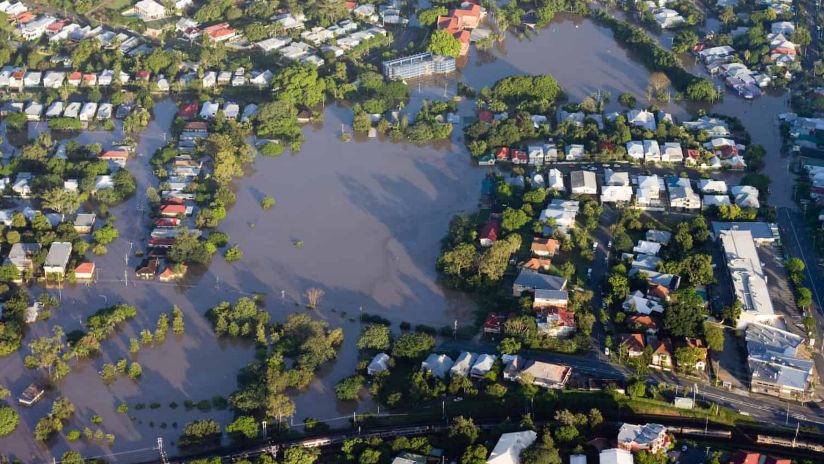Our young engineers put mmWave through its paces with 50 tests of 5G
FOOTAGE: On a green Telstra gradient background, the words ‘5G and EME - Is it safe?’ are displayed. It’s the first of several questions that this video answers.
AUDIO: A gentle instrumental music track plays in the background.
FOOTAGE: We now see Telstra EME expert Mike Wood talking to the camera as he sits in a glass-walled office in a Telstra building.
MIKE WOOD: It’s really important to note that the existing international safety standards cover 5G, they include children, and they’re very conservative.
FOOTAGE: We see video of Mike and his EME team in several urban locations around Melbourne, using their EME testing equipment to measure baseline and benchmark levels of electromagnetic energy from different devices and scenarios. For example, the team works in a football field with their EME testing equipment on a tripod as they measure EME levels from a nearby mobile base station tower.
MIKE WOOD: So the EME levels measured in Telstra’s 5G network were found to be well below the safety limits, and in many cases over 1000 times lower.
FOOTAGE: Another question appears on screen on the same green Telstra background - ‘5G and EME - Where does 5G sit in mmWave frequencies?’ We then return to the office and Mike speaking to the camera.
MIKE WOOD: mmWave (pronounced ‘millimeter wave’) is not new. It’s just a higher part of the frequency band that’s already used for existing communications. There’s been extensive research into mmWave frequencies, and the existing EME international safety standards do cover mmWave.
FOOTAGE: We see more video of the 5G EME testing equipment being used at various locations around Melbourne.
MIKE WOOD: Telstra’s trial of 5G mmWave showed that the EME levels were very low and similar to 3G, 4G and Wi-Fi.
FOOTAGE: After more vision of EME testing equipment, we close on the Telstra logo appearing over a green background before fading out.
I’ve been testing EME levels for decades, and this is some of the most extensive testing I’ve taken part in – we’ve really put mmWave and small cells through their paces. This round of testing was different, though, in that we also sought help from the graduates and young engineers in our business who really embrace the latest tech.
No matter how much we upped the ante – and we really threw everything we had at our testing to max out the small cells – we found that our 5G technology produces electromagnetic energy levels not just slightly below, but actually around 1000 times below the safety limits in most cases.
How did we test the network?
Importantly, we did our testing on Telstra’s live network. This wasn’t just a bunch of boffins testing EME in the lab – our 50 tests of 5G were real-world tests, in places like apartments, pubs, cafes, transport hubs, homes and businesses – and even a dentist’s office. We also used devices that are commercially available. This is where our grads and young engineers really put their mark on this project, seeking out the best real-world situations to put 5G to the test and gather valuable real-world data.
In a local café, one of my favourite places to work, our Telstra graduates arranged a coffee and 5G mmWave test where their challenge was to max out the hardware we had available – to all connect to the mmWave hotspots and run video streaming, jump on social media and their everyday online work from the café, really putting 5G to the test with real-word scenarios while we measured the EME.
As we expected, the EME measured was very low whilst the grads enjoyed a seamless connection, learned how the testing was conducted, and helped us evaluate more real-world settings.
Encouraging our young engineers and providing these learning opportunities really helps us to ensure the Telstra networks are world class, all while we’re helping to develop Australia’s best technical talent. These are Australia’s future technology leaders!
What did we find?
Our testing also found that 5G EME levels from small cells and 5G mmWave were similar to 3G, 4G and Wi-Fi. These are technologies that have been around for more than a decade.
Even at the highest level measured in our testing – which was on an apartment balcony directly opposite a small cell – was very low at 0.28% of the safety limit, barely one quarter of one percent. This answers an important question often asked about small cells – a great connection to the apartment in this instance still meant low EME.
Our EME team conducted the tests at a variety of locations in Queensland and Victoria during non-Covid lockdown periods, and used specialised testing equipment that works in the mmWave frequency range.
We tested at these locations:
- Southport, QLD
- South Brisbane, QLD
- Melbourne, VIC
The nerdy tech details
The team used specialised testing equipment that works in the mmWave frequency range.
Tests were carried out using a Telstra 5G Wi-Fi Pro connected to a 5G mmWave small cell, which connects to the modem through a low-powered narrow beam through a technology called beamforming. The download speed we measured at the modem was around 1.8 to 2.4Gbps for these tests – so it was certainly moving data at a rate of knots!
To get definitive results from our testing, we used a spectrum analyser at 26GHz and a directional mmWave horn antenna, which allows accurate measurement of the beam and associated EME level from the mmWave small cell.
The narrow beam means that measuring EME must be done in line with the modem, so we had to measure the beam directly in between the small cell and the modem itself. If you step two metres to one side, the EME level drops away because you’ve moved off the edge of the beam. The same happens when the modem is not active – the EME drops away.
We conducted all the tests following procedures in Australian and international standards for testing EME. In all our tests, we loaded the small cell to maximum capacity in a single beam to one user – which in practice would never really occur – and we found the maximum EME to be less than 1% of the safety limit in all cases.
In fact, we found the maximum EME levels to be around 1000 times below the safety limits. What this shows us is the newer 5G technology is very efficient, and even the maximum EME levels are well below the conservative safety limits.
In reality, the actual or typical EME levels will be well below maximum levels, which is what we are finding on the existing 5G network that we have already rolled out in many locations across Australia.


